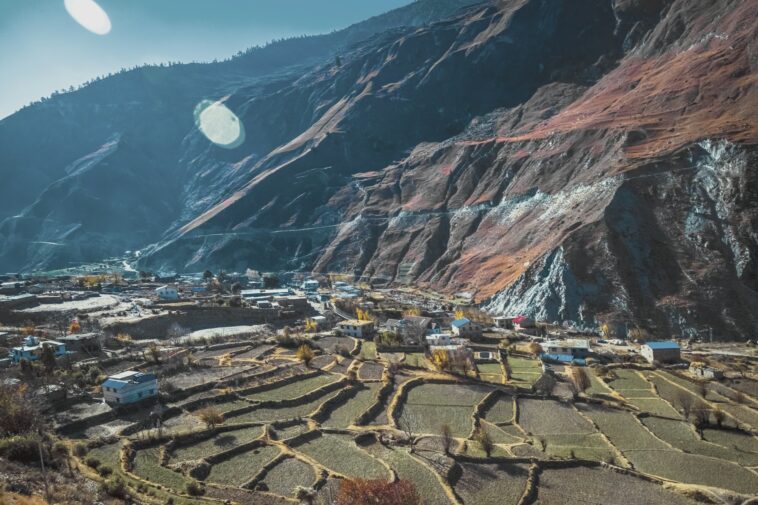Why Is the Upper Dolpo Trek Considered One of Nepal’s Hidden Treasures?
The Upper Dolpo Trek is a journey into one of the most remote and culturally preserved regions in Nepal. Located in the far west, close to the Tibetan border, this trek offers an untouched landscape, traditional Tibetan Buddhist culture, and raw natural beauty rarely found elsewhere. With restricted access, few tourists, and challenging passes over 5,000 meters, Upper Dolpo is both physically demanding and spiritually enriching.
Unlike the busier routes of Everest or Annapurna, Upper Dolpo feels like stepping into a forgotten land where time stands still and nature dominates the rhythm of life.
What Makes the Upper Dolpo Trek So Unique?
What truly sets the Upper Dolpo Trek apart is its isolation and authenticity. The region is a sanctuary for those seeking solitude, deep cultural immersion, and a more challenging Himalayan experience. Along the way, you’ll cross high passes like Kang La (5,360m) and Sela La (5,094m), traverse arid valleys, and walk beside ancient salt trade routes once used by Tibetan traders.
One of the trek’s most remarkable highlights is Shey Gompa, a centuries-old monastery nestled beneath Crystal Mountain. This sacred site, often referred to as the spiritual heart of Dolpo, is where locals still make an annual kora (circumambulation) as a form of pilgrimage.
Another unforgettable stop is Phoksundo Lake, one of Nepal’s deepest and most beautiful high-altitude lakes. Its turquoise water, set against a backdrop of barren cliffs and pine forests, adds surreal beauty to the rugged trail.
How Difficult Is the Upper Dolpo Trek?
The Upper Dolpo Trek is classified as strenuous, best suited for experienced trekkers with a high level of fitness and previous high-altitude trekking experience. The trek takes you above 5,000 meters several times, often without the comforts found in more developed trekking routes.
Days are long, terrain is rough, and basic amenities are limited. Trekkers must be prepared for camping, carrying supplies, and managing potential altitude-related issues. The remoteness means that even simple logistics—such as food and communication—require advance planning.
This is not a teahouse trek. Most of the route requires camping, supported by porters and a guide who can help manage permits and navigate the challenging terrain.
What Is the Best Time to Trek in Upper Dolpo?
The best time to do the Upper Dolpo Trek is during late spring (May to early June) and autumn (September to October). These seasons provide the most stable weather, clear skies, and pleasant temperatures for high-altitude walking.
Monsoon season (June to August) is also possible, unlike in other trekking regions of Nepal, because Upper Dolpo lies in the rain shadow of the Dhaulagiri range. This makes it one of the few trekking regions in Nepal suitable for summer treks, though river crossings and occasional storms still require caution.
How Long Does the Upper Dolpo Trek Take?
The trek typically takes 24 to 28 days, depending on the route, acclimatization, and travel to/from the region. The journey begins with a flight to Juphal via Nepalgunj, followed by days of walking through remote valleys and high passes.
A classic itinerary might look like this:
-
Day 1–3: Kathmandu to Juphal, trek to Dunai and Chhepka
-
Day 4–7: Reach Phoksundo Lake and acclimatize
-
Day 8–12: Cross Kang La Pass to Shey Gompa
-
Day 13–18: Trek through Saldang and over Sela La Pass
-
Day 19–24: Descend through Dho Tarap and return to Juphal
What Permits Are Required for Upper Dolpo?
Upper Dolpo is a restricted area, and trekking here requires:
-
A Restricted Area Permit (valid for 10 days, extendable with extra fees)
-
A Lower Dolpo Permit
-
A Shey Phoksundo National Park Entry Permit
Additionally, a registered guide and at least two trekkers are mandatory for the permit approval. All arrangements must be done through a government-licensed trekking agency.
Why Is the Upper Dolpo Trek Spiritually and Culturally Profound?
Upper Dolpo shares deep cultural ties with Tibetan Buddhism and the Bon religion. The people here still live in stone houses, wear traditional dress, and practice customs that have remained unchanged for centuries. You’ll pass through villages like Saldang and Tinchuli, where monasteries sit high above cliff edges and prayer flags flutter across mountain passes.
For those drawn to spiritual landscapes, the sacred aura of Crystal Mountain, prayer walls carved with mantras, and the simplicity of Dolpo life create a powerful connection to nature and heritage.
What Kind of Trekker Should Choose Upper Dolpo?
Upper Dolpo is ideal for those who:
-
Have prior trekking or mountaineering experience
-
Seek a remote, less-traveled route
-
Appreciate Tibetan culture and spiritual landscapes
-
Are physically fit and ready for camping treks
-
Want a challenge beyond Nepal’s mainstream trails
This post was created with our nice and easy submission form. Create your post!





